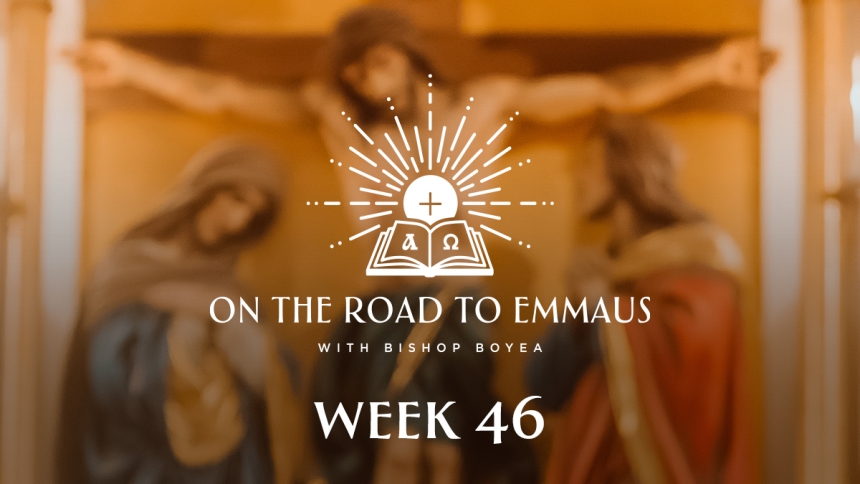
April 26, 2024
Friday of the Fourth Week of Easter
Dear brothers and sisters in Christ,
“Do I really have to shake her hand?” Imagine that for at least the first 1000 years of Church History you kissed your neighbor at Mass! Where did this come from? That’s what we’ll find out this week On the Road to Emmaus, our year-long pilgrimage through the Most Holy Sacrifice of the Mass, as we explore the significance of the Sign of Peace.
After the priest prays a short prayer to Jesus asking for peace and unity for the Church, in spite of our sinfulness, he then directs his attention to the congregation and says, “The peace of the Lord be with your always,” and we respond, “And with your spirit.” Then the Deacon may invite us to offer a sign of peace to each other. The directions in the Missal state: “And all offer one another a sign, in keeping with local customs, that expresses peace, communion, and charity.”
At the end of his First Letter to the Corinthians (16:20), Paul writes, “All the brothers greet you. Greet one another with a holy kiss.” Paul commonly uses this phrase (I Thess 5:26; II Cor 13:12; Romans 16:16) and it also appears in the First Letter of St. Peter (5:14): “Greet one another with a loving kiss. Peace to all of you who are in Christ.” Soon, this greeting took place during the Mass, perhaps as a way to fulfill Christ’s command (Matthew 5:23-24): “Therefore, if you bring your gift to the altar, and there recall that your brother has anything against you, leave your gift there at the altar, go first and be reconciled with your brother, and then come and offer your gift.”
Just over 300 years later and Saint Augustine of Hippo (Sermon 227) demonstrates this combination. He writes: “Then, after the consecration of the Holy Sacrifice of God, because He wished us also to be His sacrifice, a fact which was made clear when the Holy Sacrifice was first instituted, and because that Sacrifice is a sign of what we are, behold, when the Sacrifice is finished, we say the Lord's Prayer which you have received and recited. After this, the 'Peace be with you' is said, and the Christians embrace one another with the holy kiss. This is a sign of peace; as the lips indicate, let peace be made in your conscience, that is, when your lips draw near to those of your brother, do not let your heart withdraw from his. Hence, these are great and powerful sacraments.”
This greeting of peace has had several places in the Mass. It has taken place at the time of the Offertory as recorded in the Apostolic Constitutions of the 4th century (8:11): “And after this let the deacon say, Let us attend. And let the bishop salute the church, and say, The peace of God be with you all. And let the people answer, And with your spirit; and let the deacon say to all, Salute one another with the holy kiss.” But already by the time of Pope Gregory the Great around 600 AD, it was seen as a preparation for reception of Holy Communion. We must be in communion to receive Communion.
So, yes, you do have to shake her hand or at least bow toward one another as you both recognize and wish peace and unity between yourselves and all present for the Holy Mass.
And, so, to this week’s challenge. Here goes: I am challenging you to consider someone you’re disconnected from or, even, estranged from and to attempt to reconcile with that person. I know for many of us that is a difficult or, even, daunting request. So, make sure you take it to your prayer. Ask the Good Lord to guide you in this challenge. Ask your guardian angel to pave the way by talking to the other person’s guardian angel. Even if nothing immediately comes of your efforts, the Lord will reward your generous act of love. Until we meet again On the Road to Emmaus, peace be with you…and may God bless you all.
+ Earl Boyea
Bishop of Lansing
